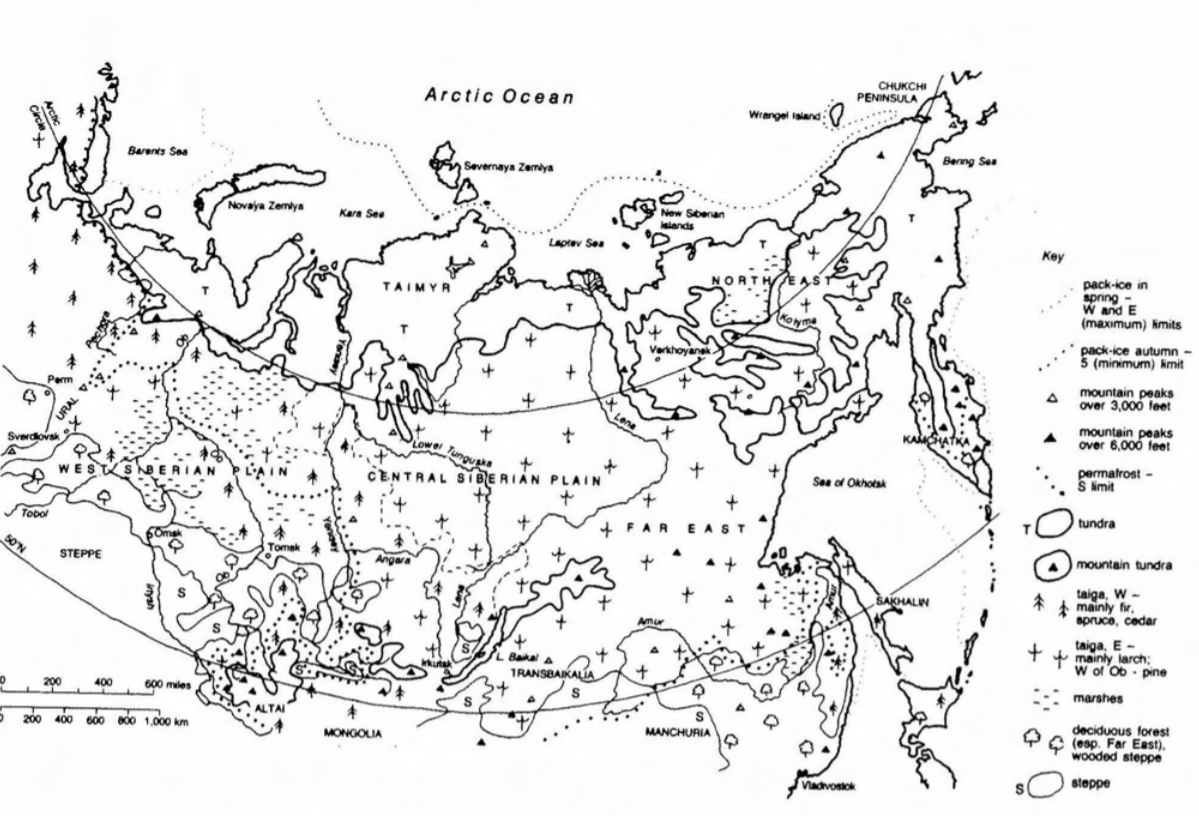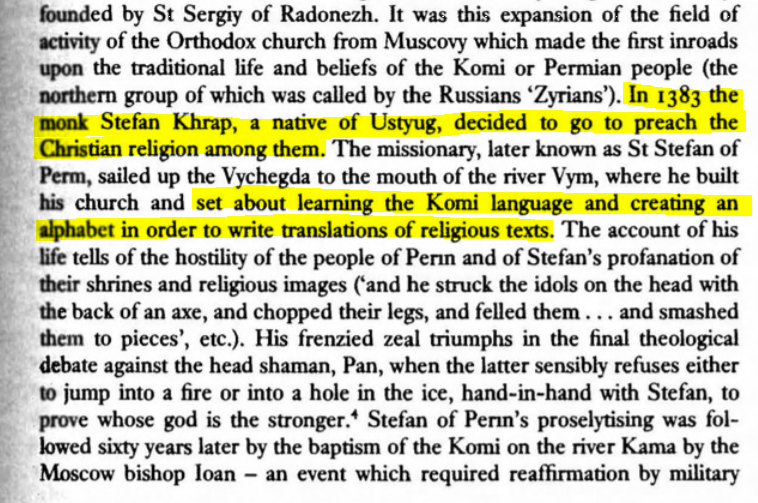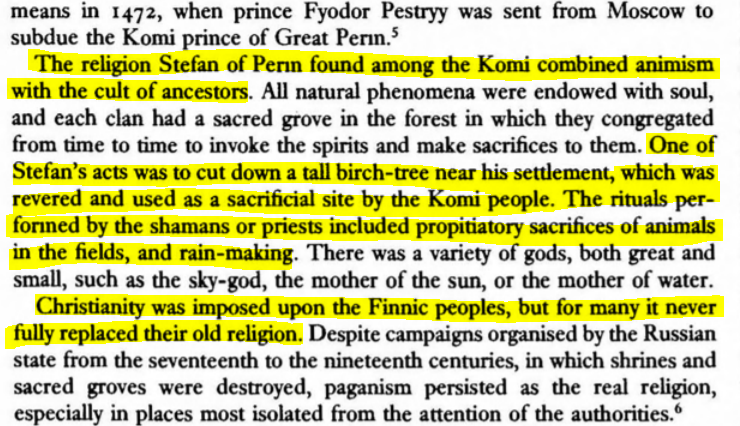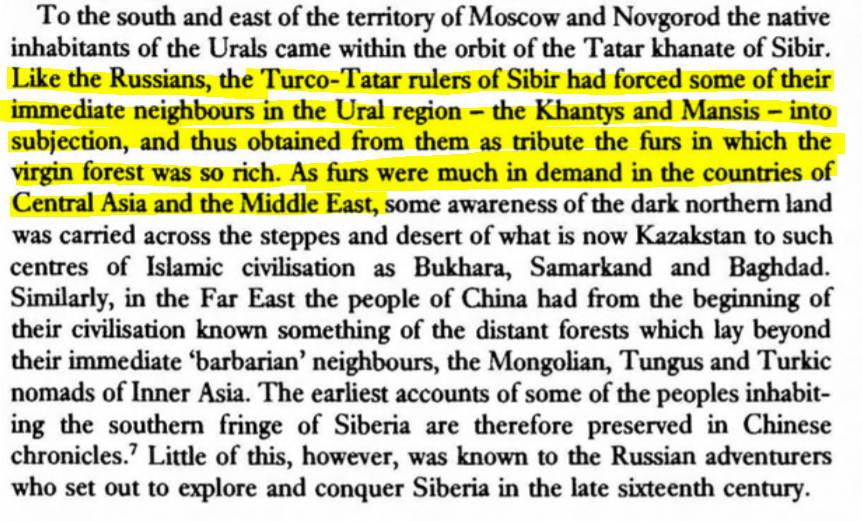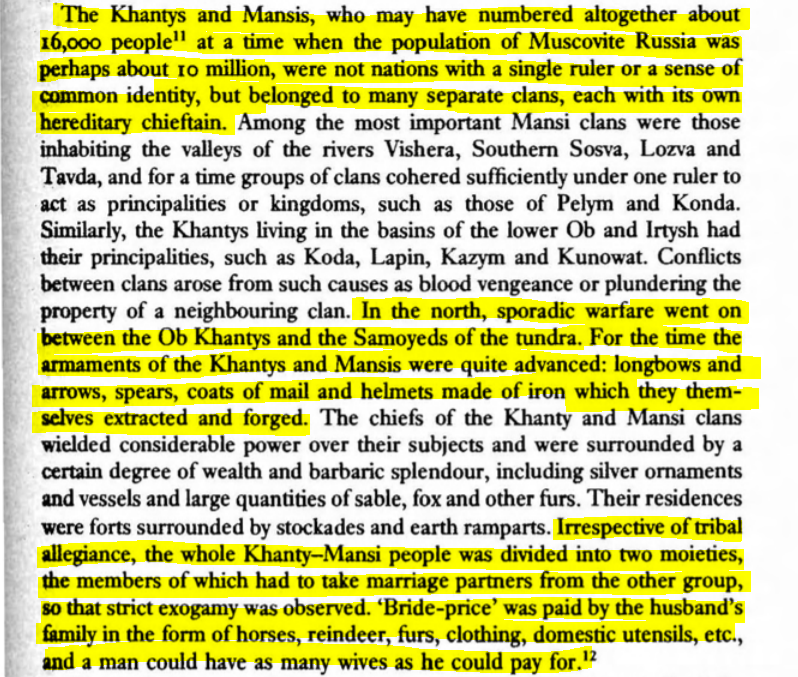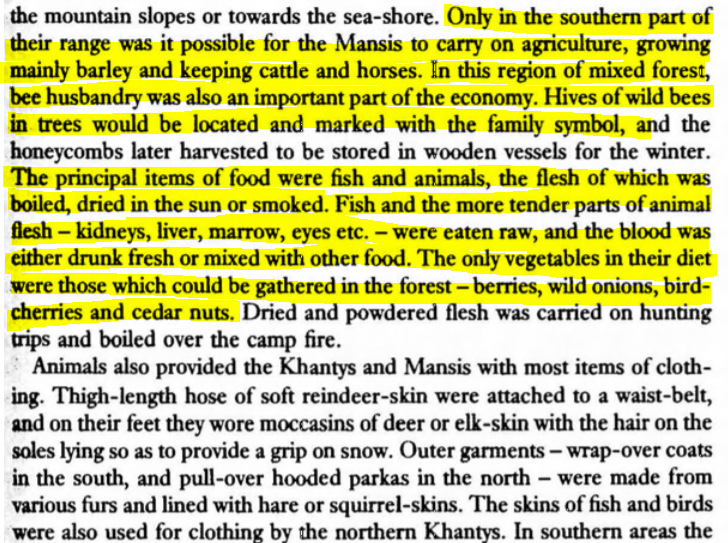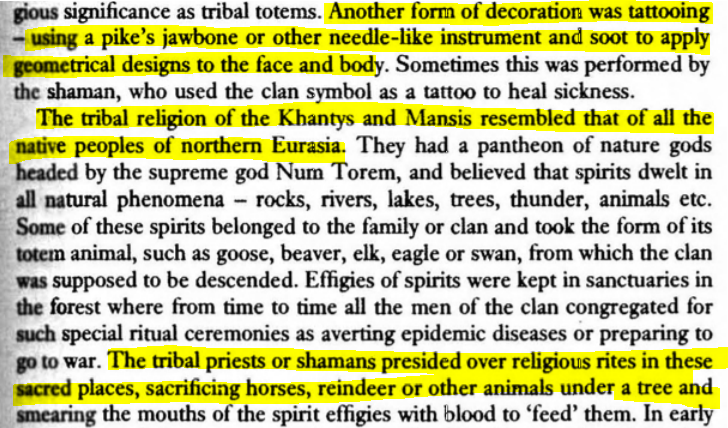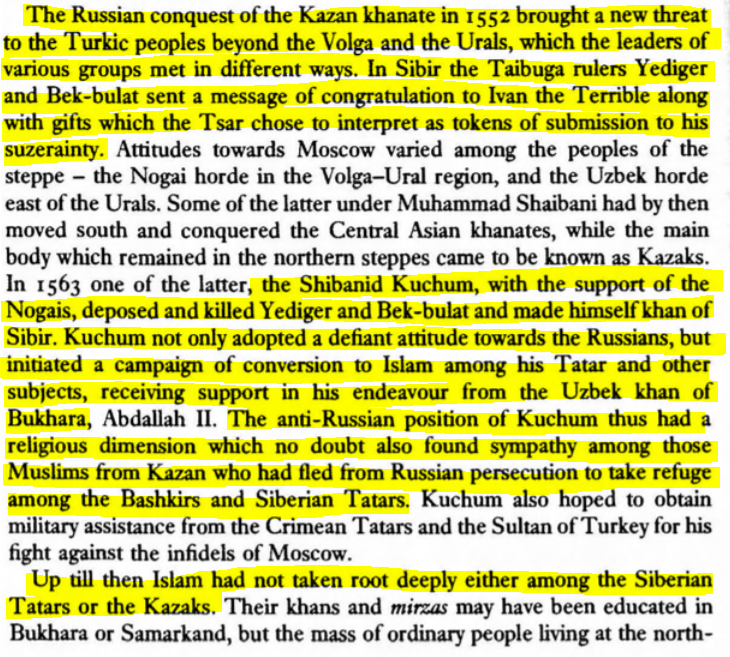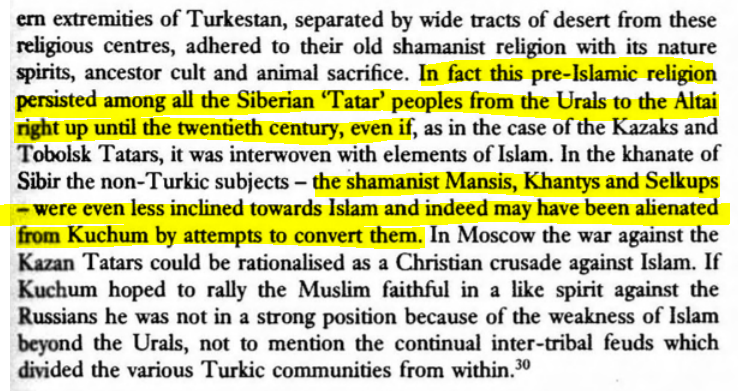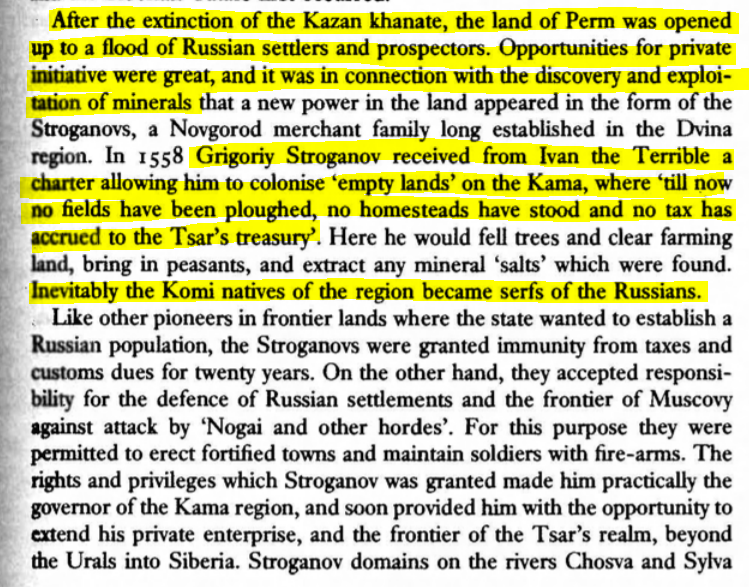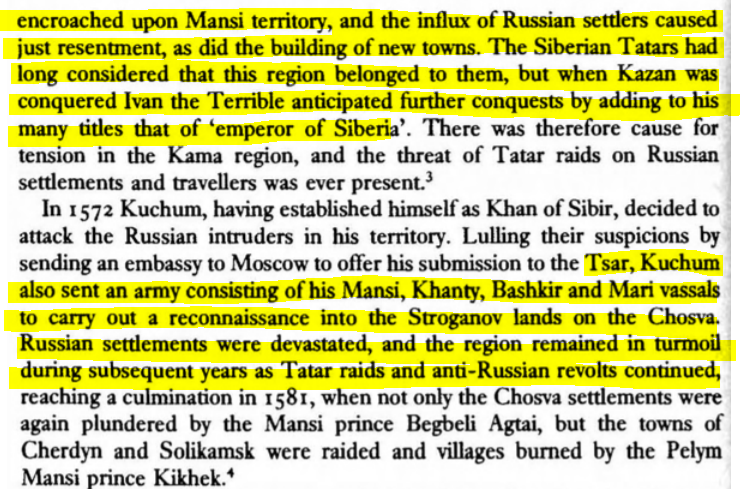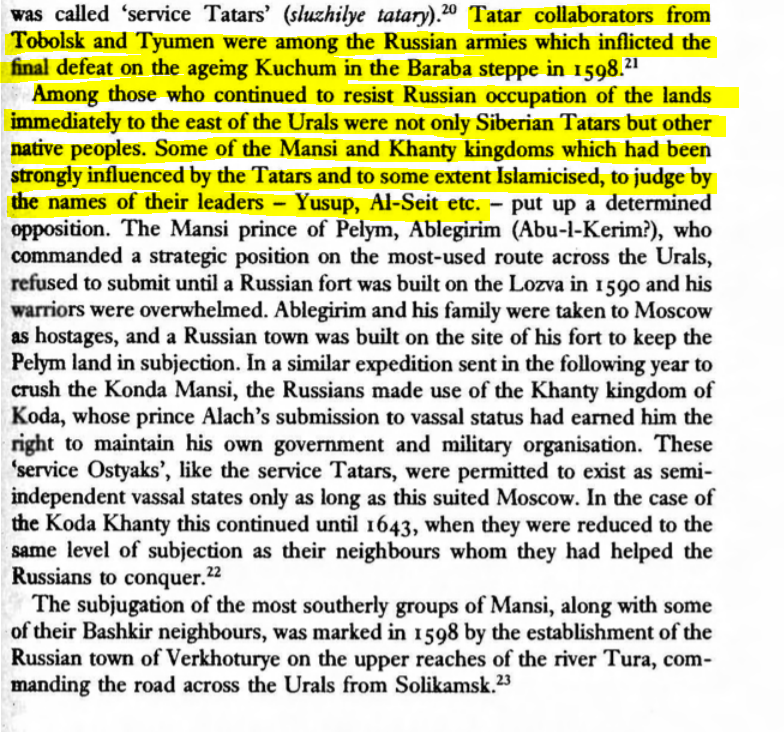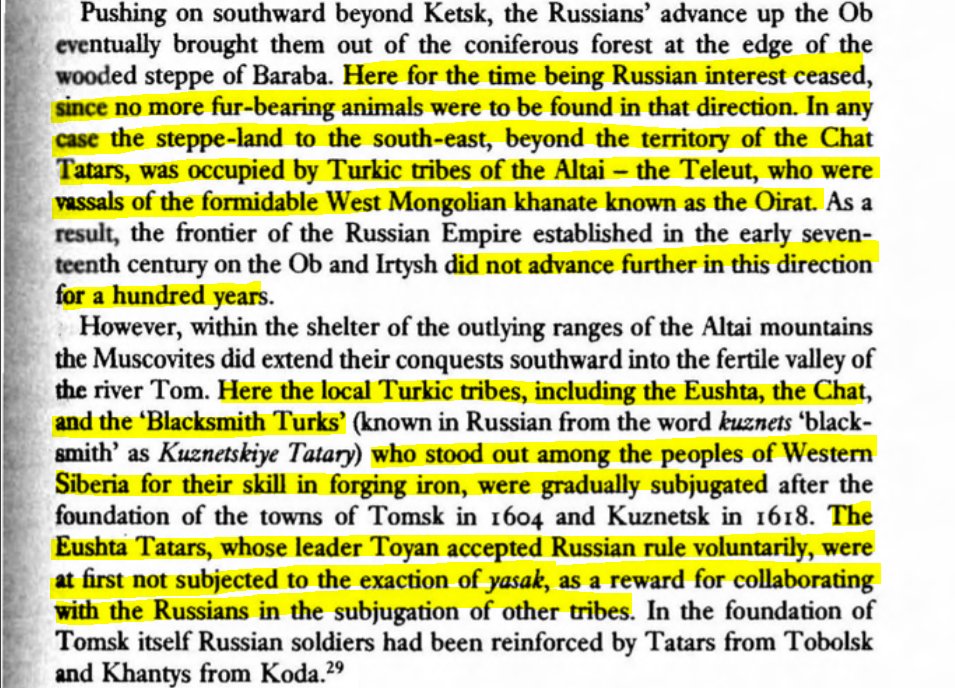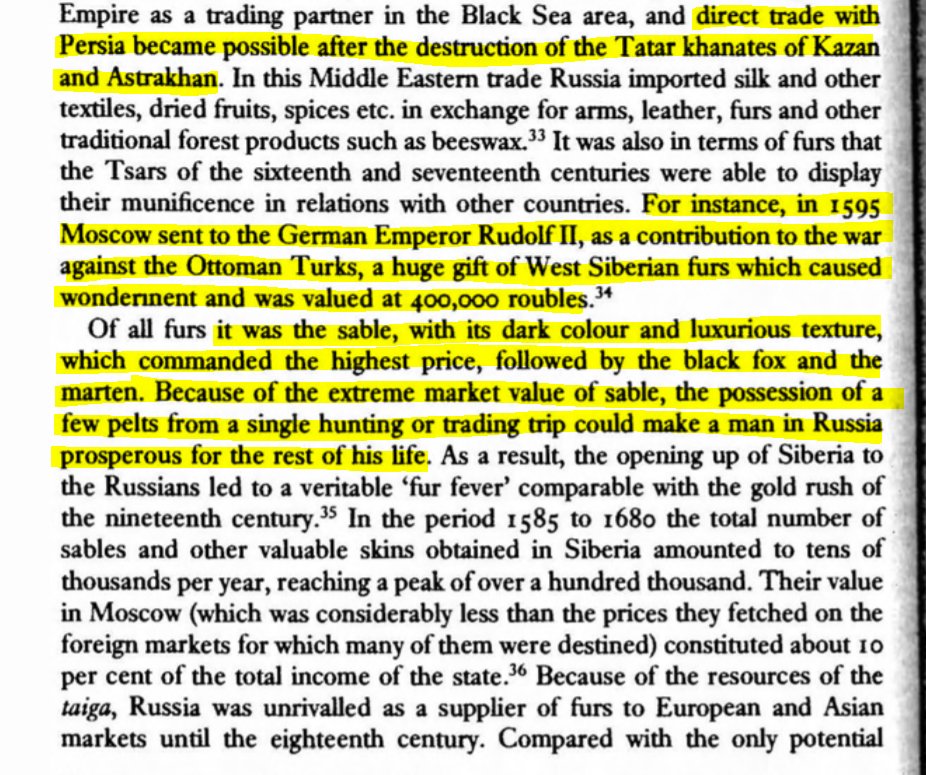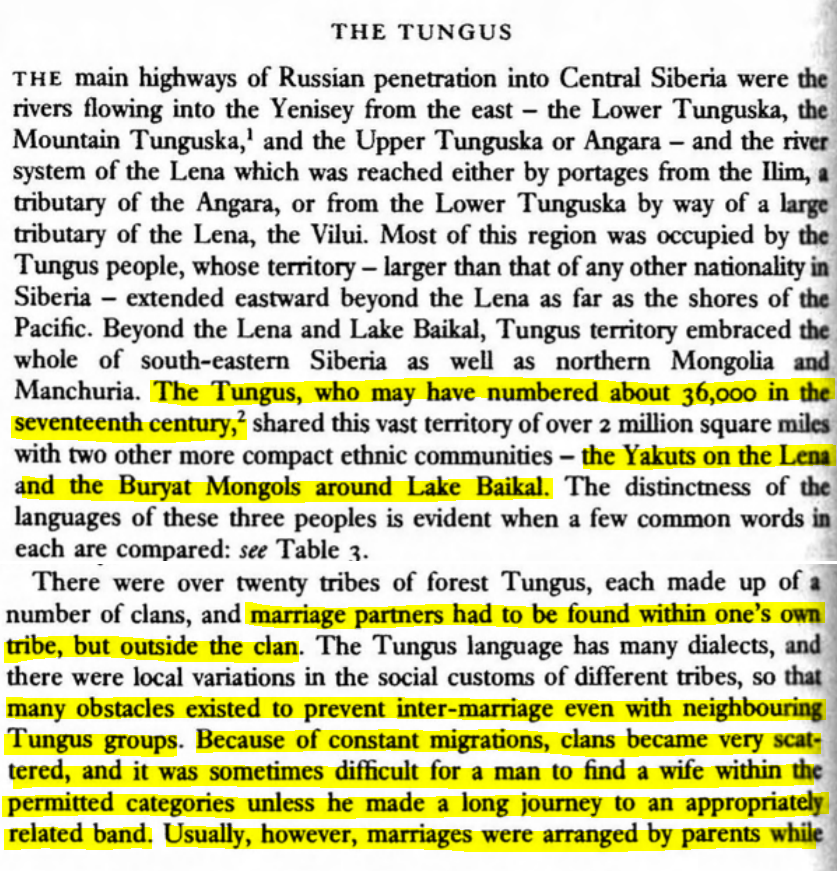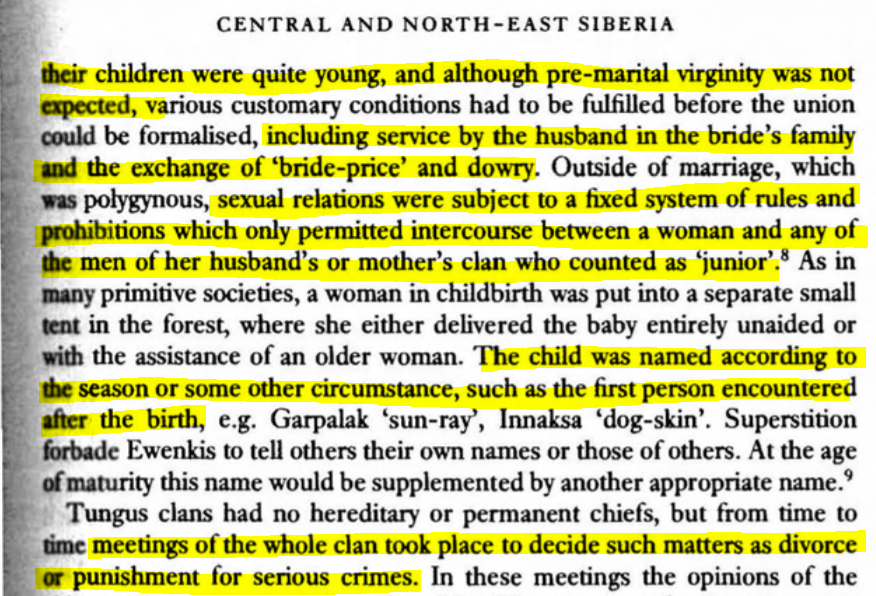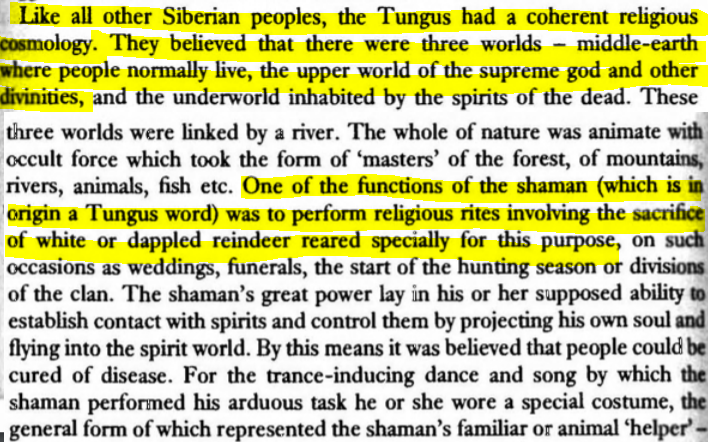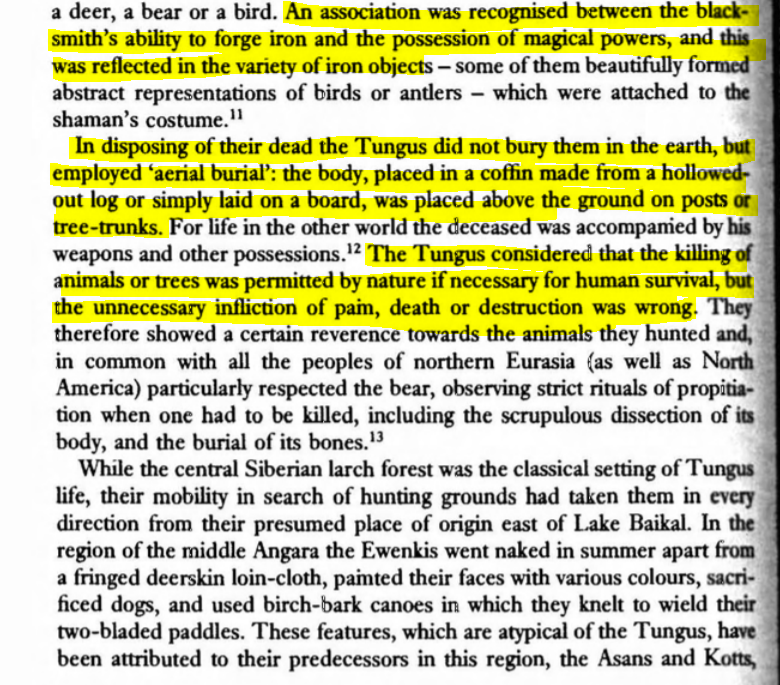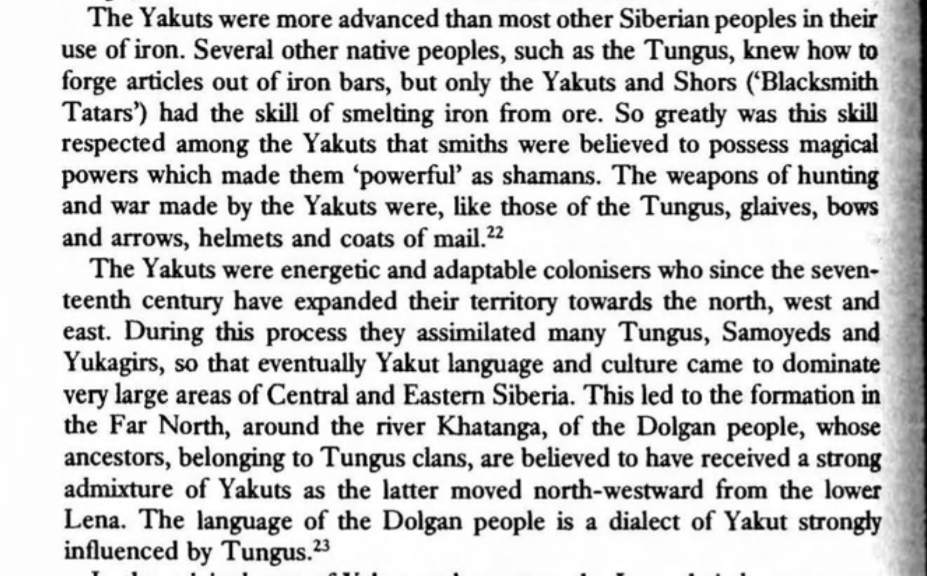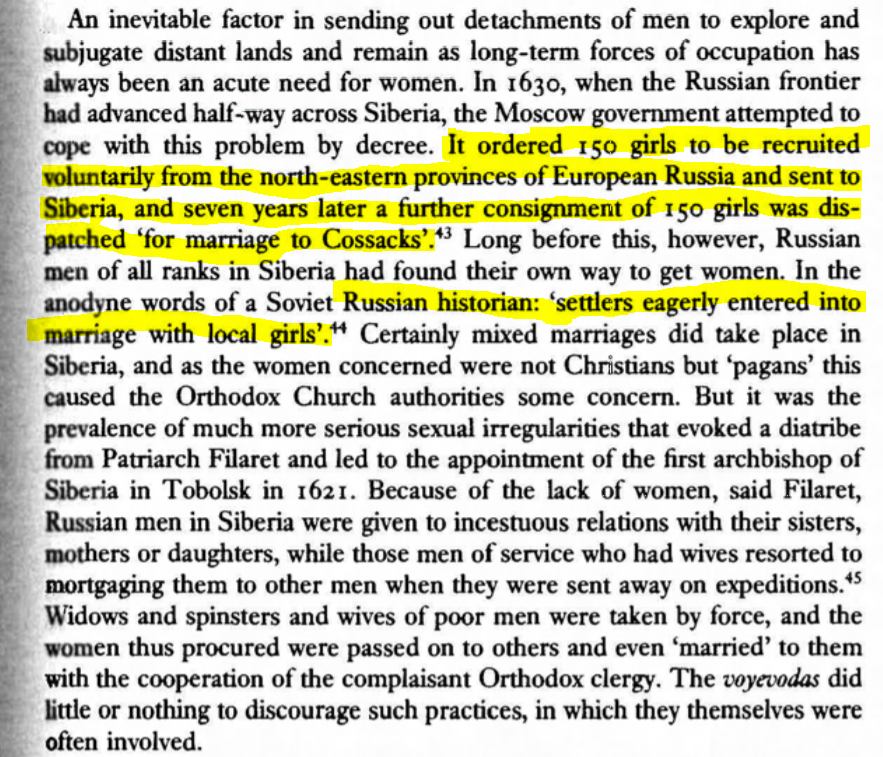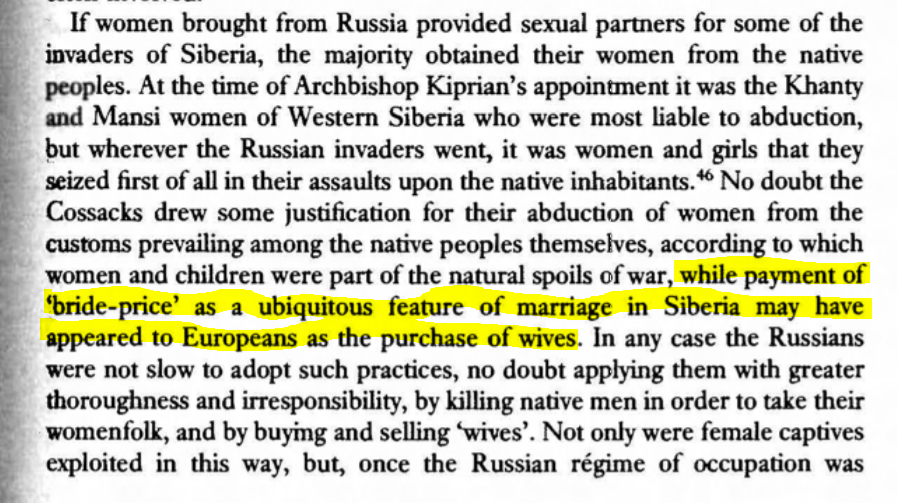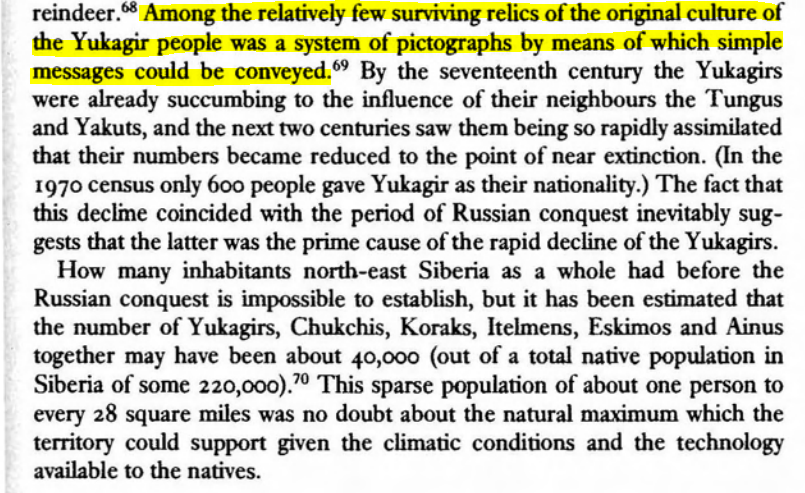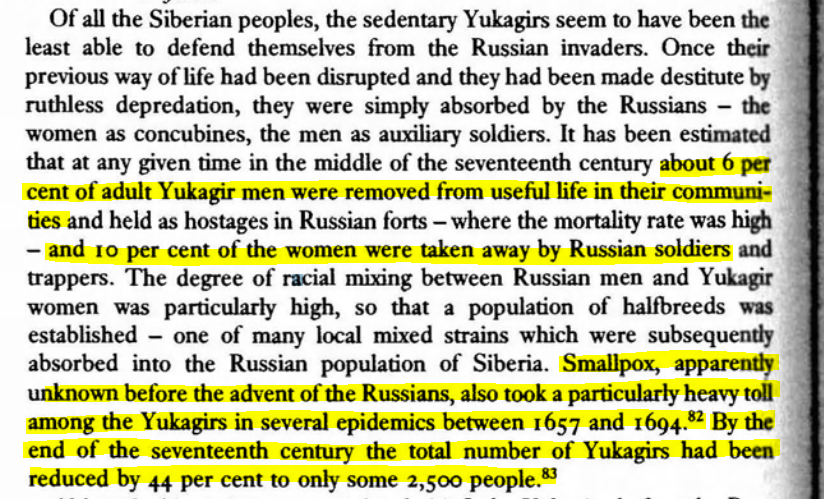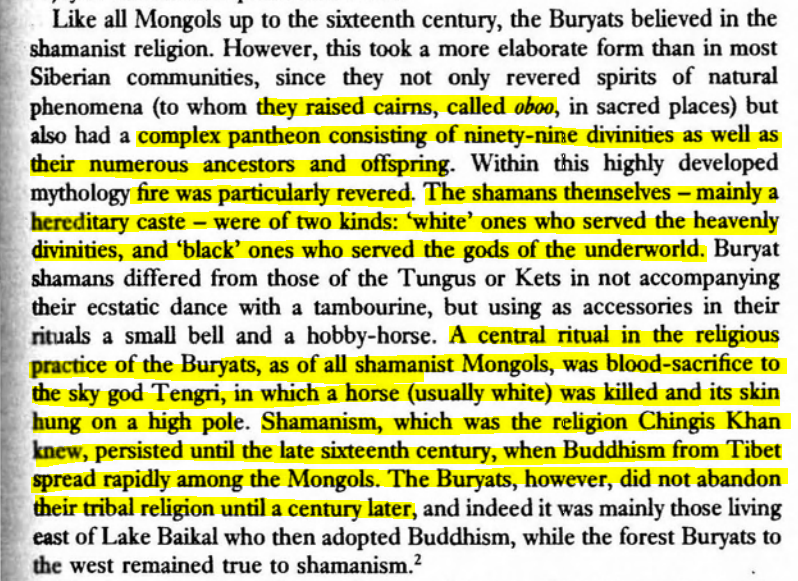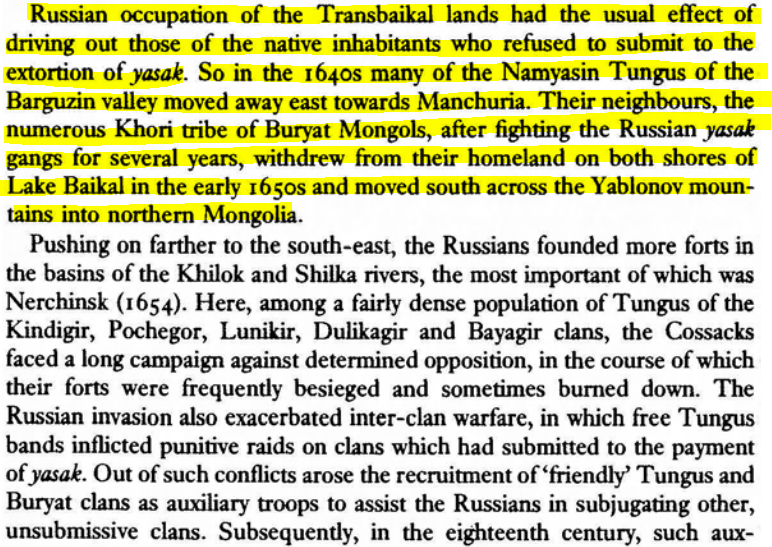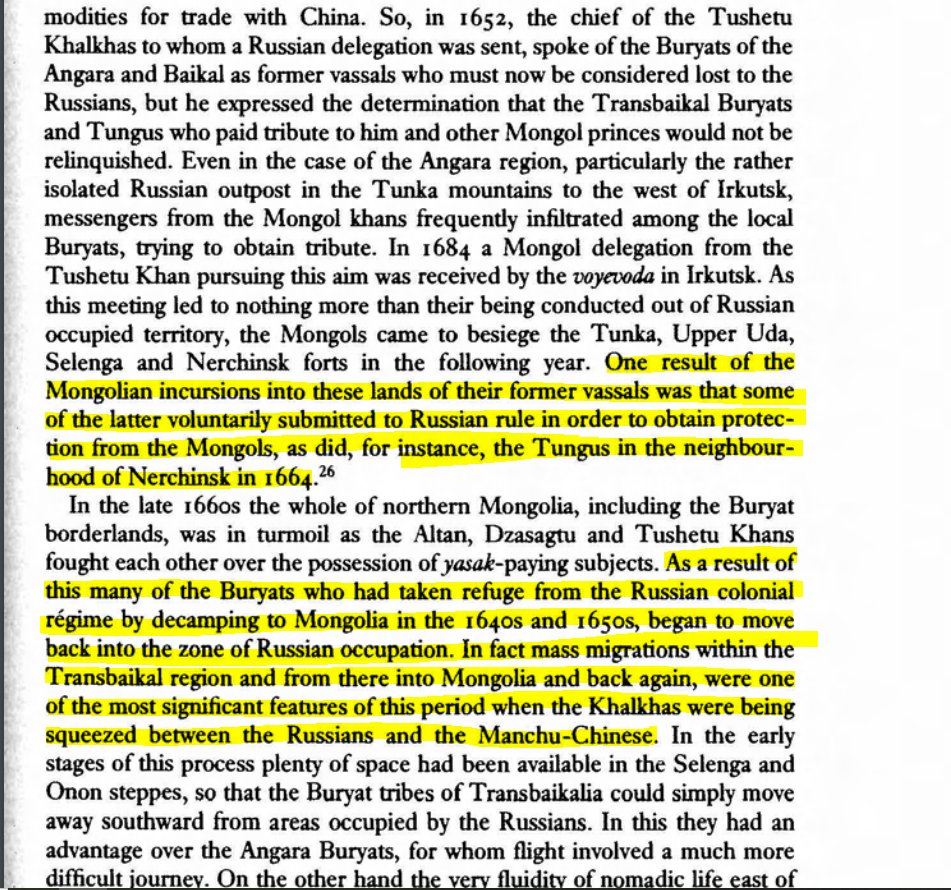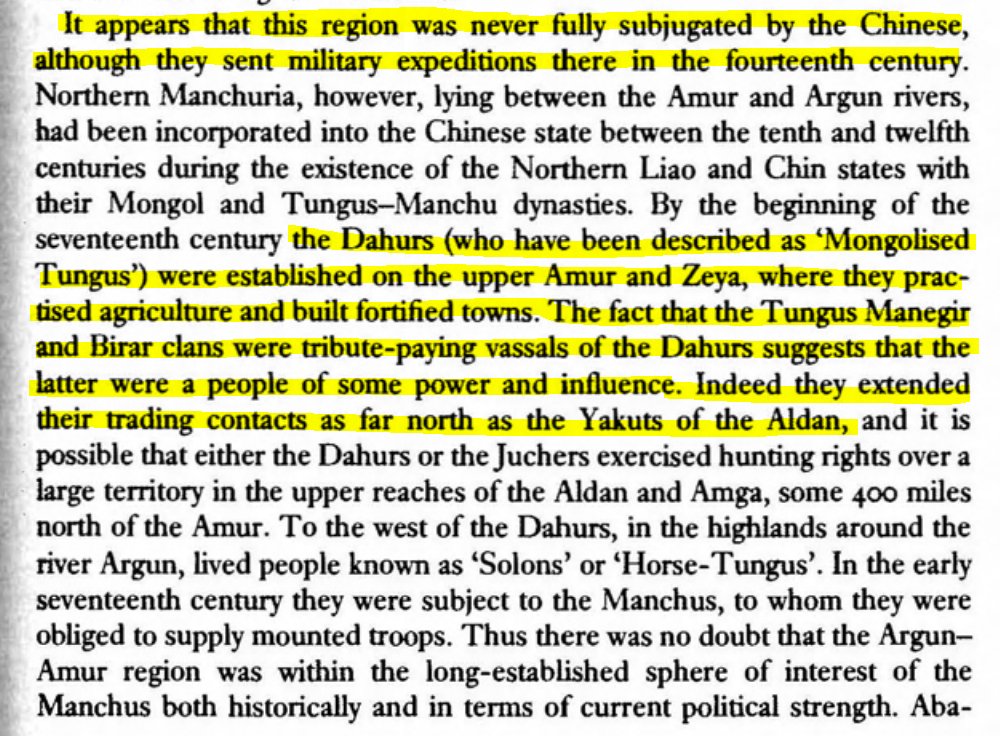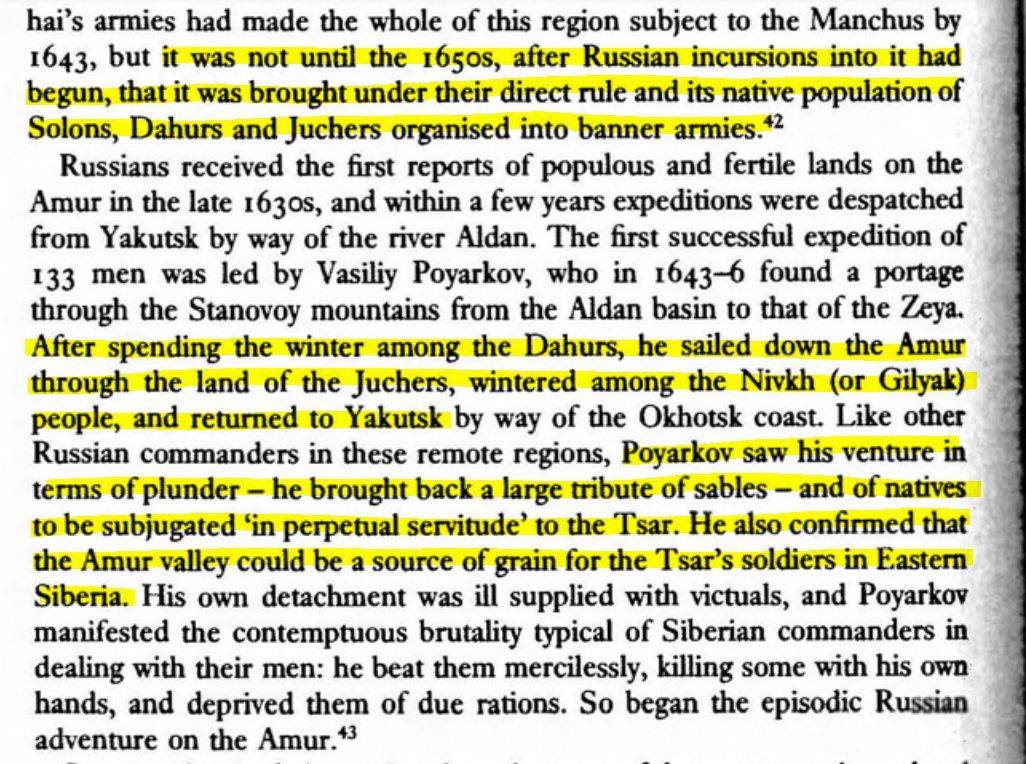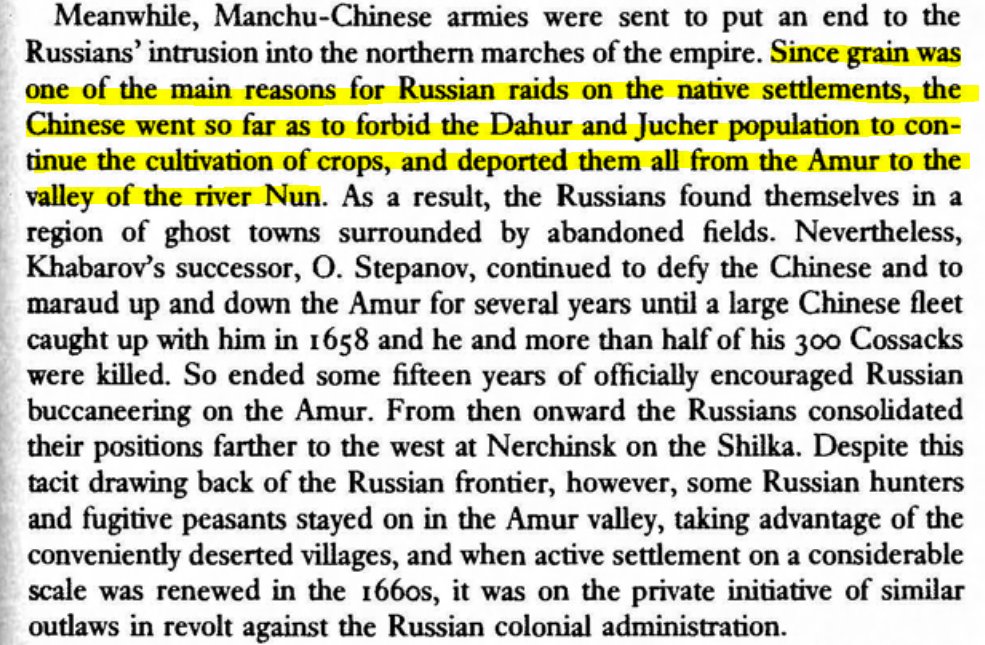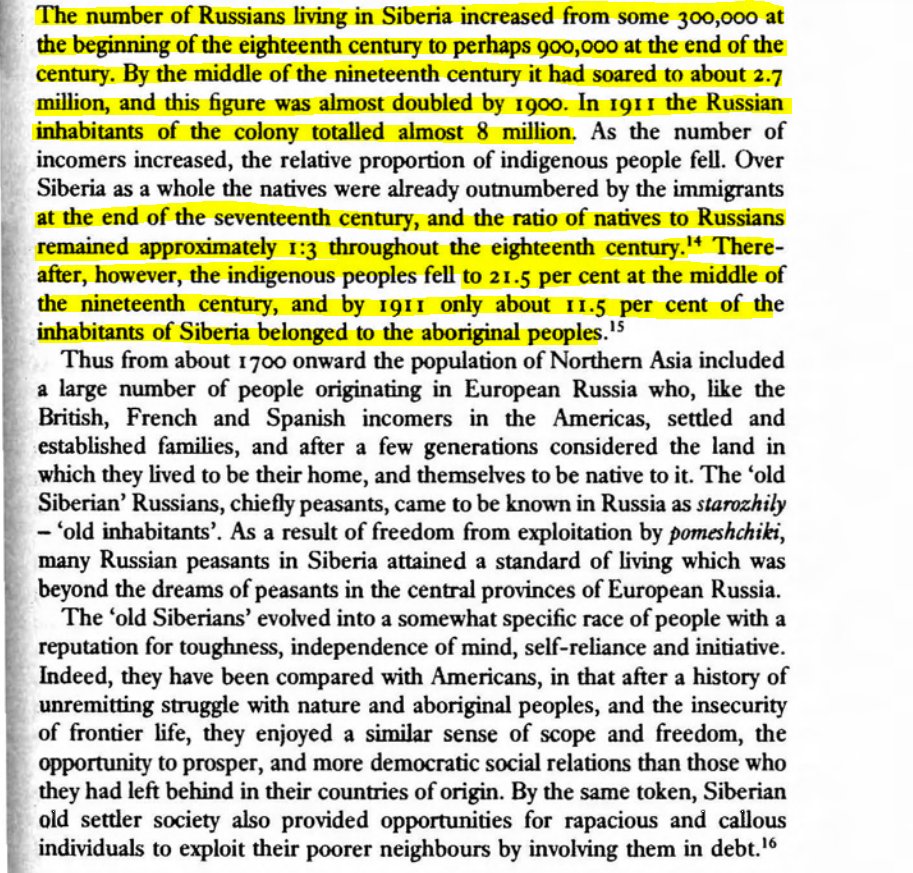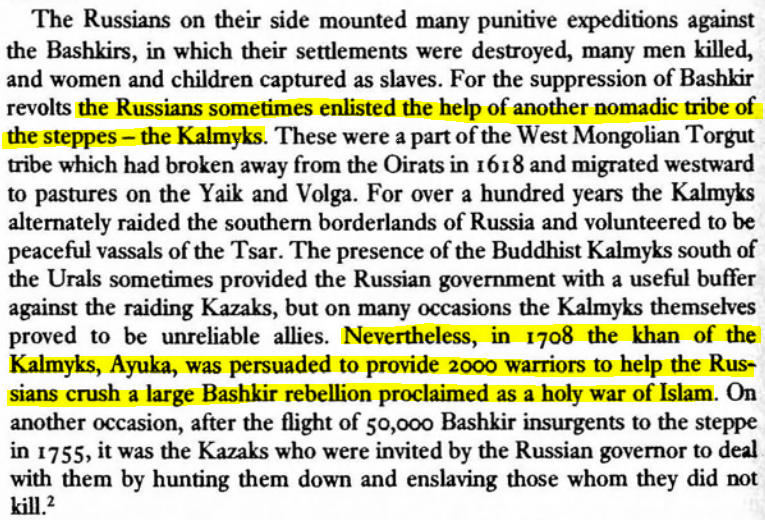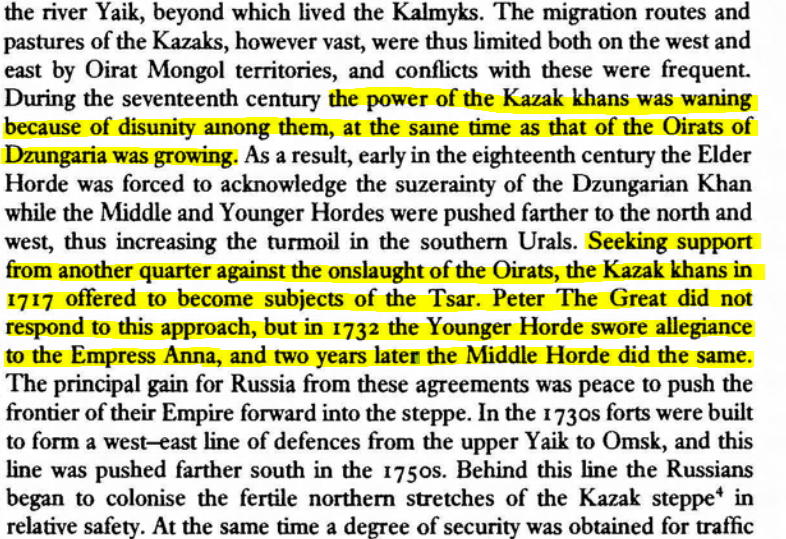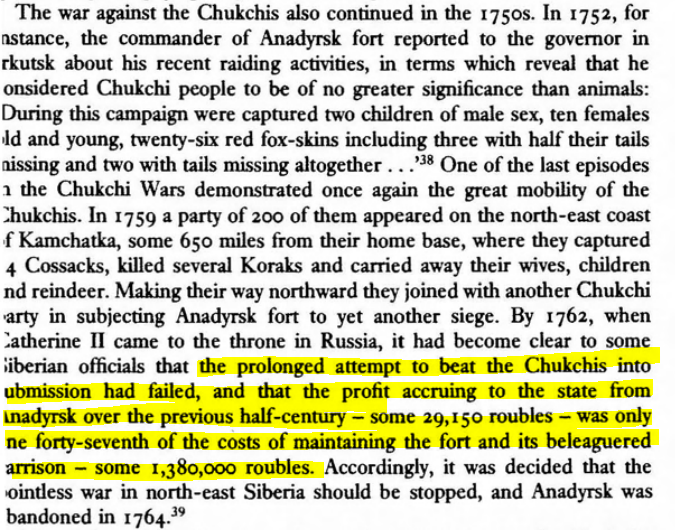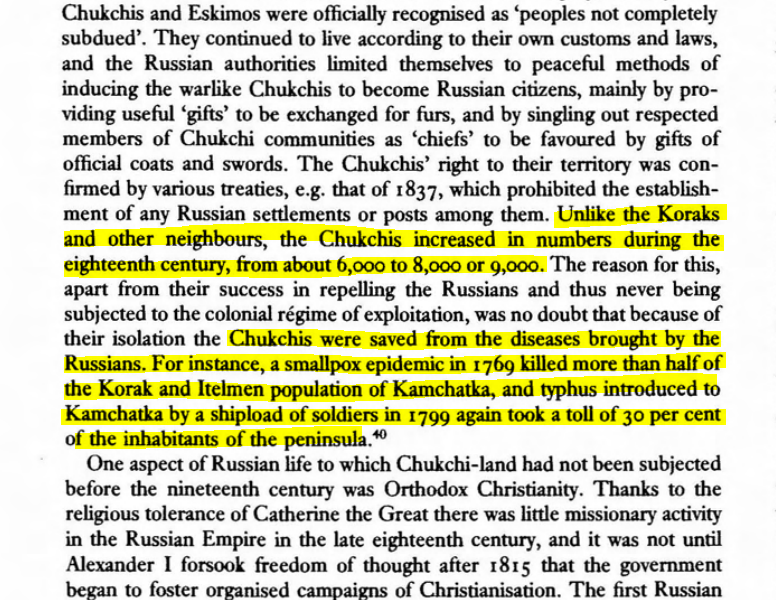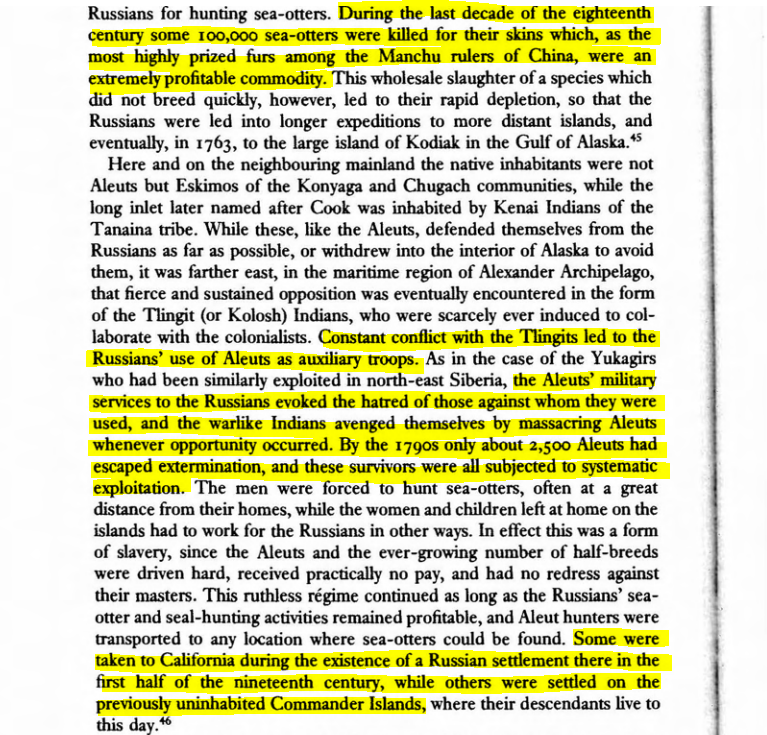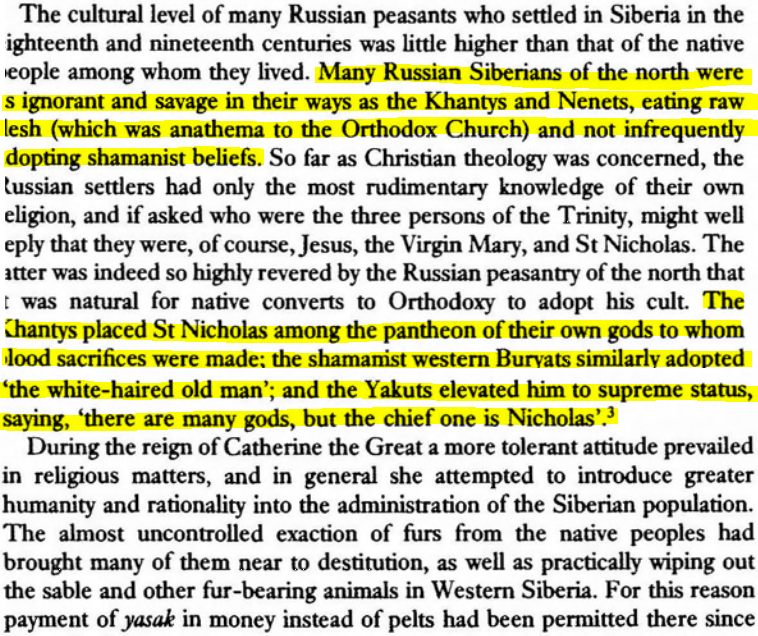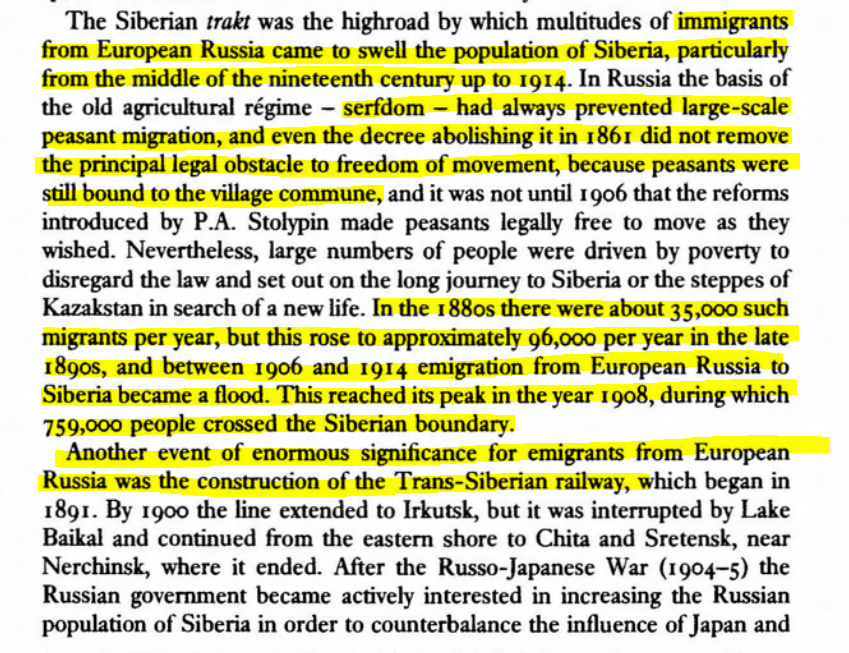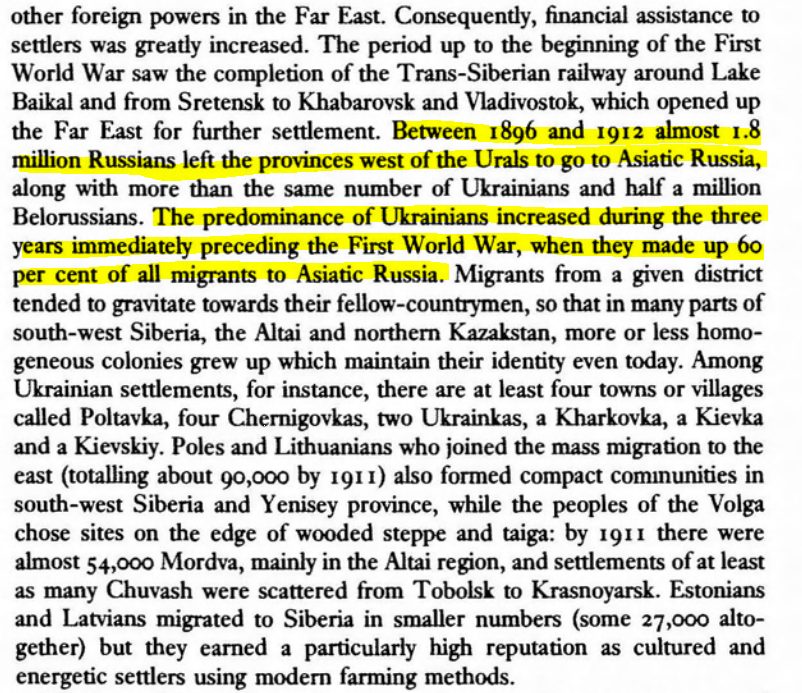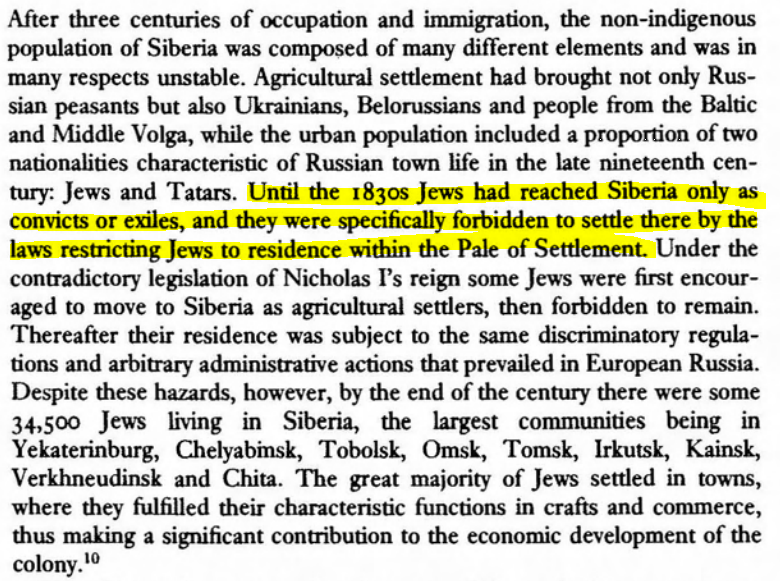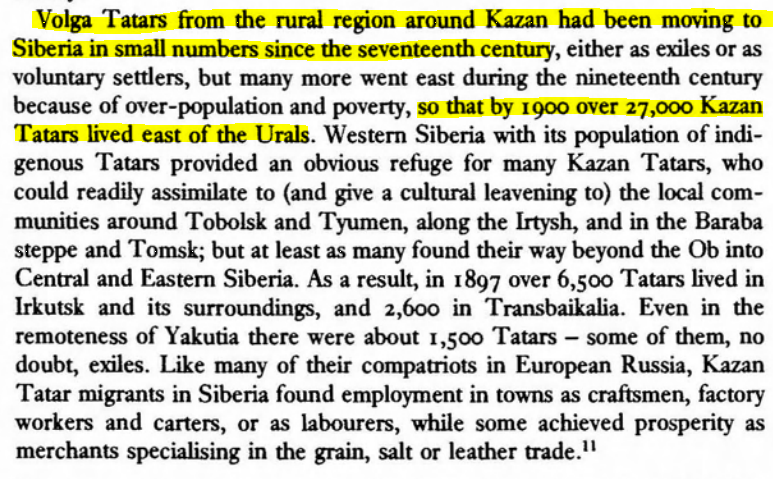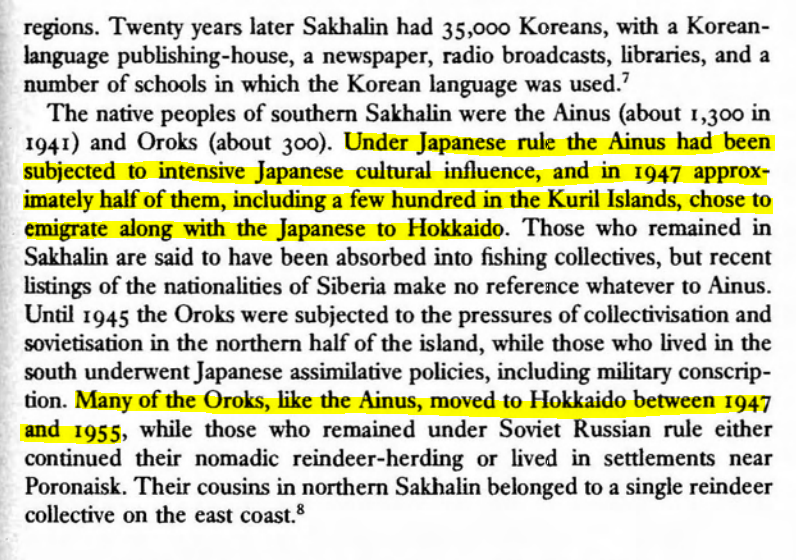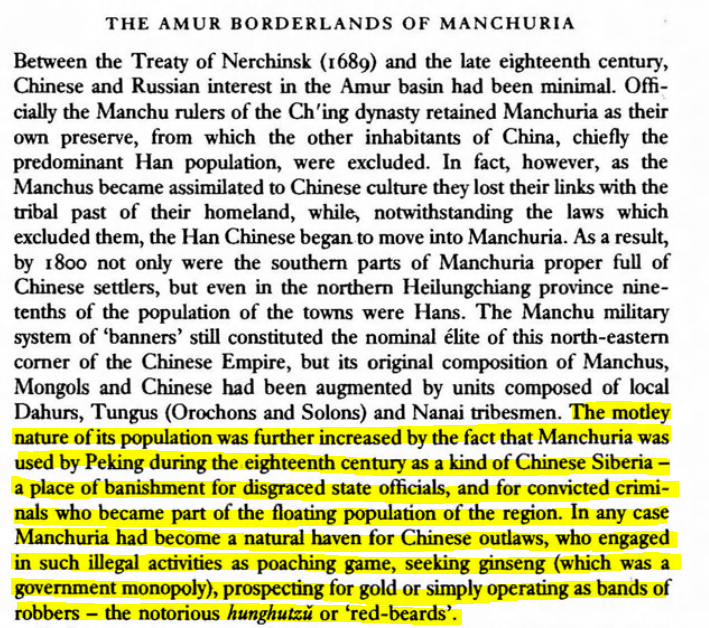Thread on "History of the Peoples of Siberia: Russia's North Asian Colony 1581-1990" by James Forsyth.
Stefan of Perm and the conversion of Permian peoples to Christianity. Stefan made an alphabet for the Perms. Permian Christianity had many animist attributes.
Like the Russians, the Tatars had subjugated their neighbors like the Khanty and Mansis. They obtained tribute from them, mostly in the form of fur.
The Khanty and Mansis had a population ~16,000, compared to Russia's 10 million. They were not single nations but comprised of different clans. They practiced exogamy and could have as many brides as they could pay for. They also had advanced weaponry.
The various Khanates had different ways of dealing with the conquest of Kazan. The rulers of Sibir sent a congratulatory message to Ivan the Terrible. Later, Khan Kuchum adopted a defiant attitude towards the Russians and encouraged the his subjects to convert to Islam.
Russia settlement was opened in the Perm. Stroganov was granted a charter by Ivan the Terrible. Russian settlement caused resentment and anti-Russian revolts among the Sibir.
Tatar collaborators helped the Russian army deal the final blow to Kuchum in 1598. Many Siberian Tatars and Islamicised Khanty and Mansi continued to resist the Russian east of the Urals.
The conquest of the Siberian Tatars. The Eushta Tatars voluntarily submitted to the Russians and didn't have to pay the Yasak (tribute of fur) to the Russians as a reward.
After the conquest of the Tatar khanates of Kazan and Astrakhan direct trade with Persia became possible. Furs were extremely valuable and a few pelts from a hunting trip could make a man for life. Sables were the most valuable, followed by black foxes and martens.
Marriage practices of the Tungus. The word "shaman" is of Tungus origin. The Tungus did not bury their dead.
The Yakuts were more advanced in their use of iron. The Yakuts conquered and assimilated many Tungus, Samoyeds, and Yukaghirs. by 1650, Yakutsk had ~2,000 Russians.
Since most Russians going east were men this led to problems. Like in the English colonies the Russians sent over mail-brides. Russians would sometimes purchase wives from the natives.
Shamanism among Mongolians persisted until the 16th century, but among the Buryats it persisted for about a century later. There two different kind of priests, they would sacrifice horses, and they would build cairns.
Many Siberians who didn't not want to live under Russia rule would migrate away. This happened with the Khori Buryats where they migrated into Northern Mongolia.
Many Siberians voluntarily submitted to the Russians in exchange for protection from the Mongols. Ironically, many of the Khori would move back into Russia.
The northern Amur was never fully subjugated by the Chinese. The Dahurs practiced agriculture and built fortified towns. Many other Tungus were their vassals. Russians looked to expand into the Amur to supply Siberia with grain.
Massive increase in the population of Russians in Siberia. In the middle of the 1800s natives made up 21.5% of Siberia's population, by 1911 only 11.5%. Russian settlers were free from exploitation from Pomeshchikis and developed a mindset comparable to frontier Americans.
Kalmyks would assist the Russians in their war against the Bashkirs. Kazakh Khans would offer to submit themselves to the Russians and later swore allegiance to Empress Anna.
The Russian wars with the Chukchi were very expensive. Unlike the Koryaks and Itelmen, the Chukchi experienced a population increase.
During the last decade of the 18th century ~100,000 sea-otters were killed due to them being highly prized by the Manchu rulers of China. Aleuts were used as auxiliary troops in Alaska by the Russia which led to Amerinds hating them. Some Aleuts were even brought to California.
Serfdom and the prohibition on peasant movement stunted Russian migration into Siberia. After its abolition, and the construction of the trans-Siberian railway, Russian migration into Siberia exploded.
Ukrainians made up 60% of the migrants in Asiatic Russia. Jews were forbidden from moving to Siberia. Many Volga Tatars would move to Siberia as well.
After the Soviet annexation of South Sahkalin, half of the Ainus and Oroks decided to leave for Japan.

 Read on Twitter
Read on Twitter